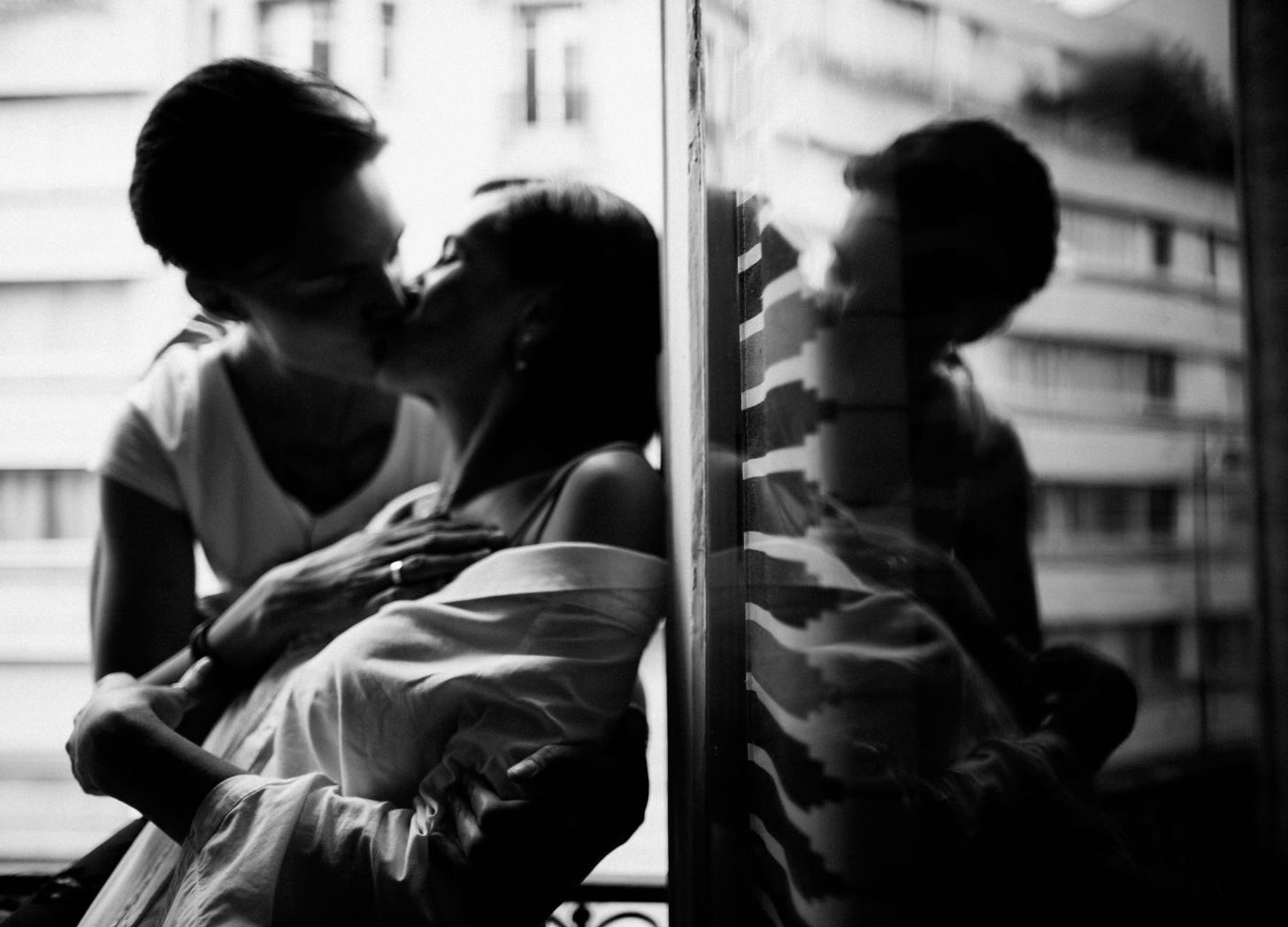Can Trans Men Be Lesbians?
The discourse breaking the queer internet
Before we dive in: Rey and the Archive exists because of paid subscribers. Your support helps me write, research, show up, and build the kind of queer community I wish I had growing up. If you value trans art, resources, and community stories, consider subscribing for $5/month. It really does make a difference and keeps this work going.
🔒 Up next for paid subscribers: I am sharing a personal story from my past when I identified as both a trans man and a lesbian, and how I made sense of that identity at the time.
Background
This all started when I first opened Instagram on my phone. The first video on my feed showed a young queer person doing a TikTok trend with text overlays.
The first line caught me off guard:
“Trans men can be lesbians.”
I raised an eyebrow. Transgender men identifying as lesbians? I scrolled further and saw even more people in the community sharing their thoughts.
Curious and confused, I sat down to unpack everything I knew about gender and sexuality. I pulled out books from my shelf, started researching, and even went live on Instagram to talk it through.
A Brief History of Trans Men and Butch Flight
Before we explore the question, let’s revisit what butch means and where the idea of “butch flight” comes from.
In Female Masculinity, Jack Halberstam defines butch as a form of queer masculinity that pushes back against gender norms. It typically refers to a masculine lesbian, though that definition has expanded over time to include a range of identities, expressions, and sexualities. Some speculate the term comes from “butcher,” linking it to working-class masculine women.
Halberstam also highlights how butches challenged both heteronormativity and the gender binary, especially in times when language around transmasculinity didn’t yet exist. Before the 1990s, many people who might have identified as trans today didn’t have the words or the community to do so.
Lesbian bars and communities flourished during the 1940s and beyond, even as queer people faced violence, isolation, and laws targeting them. Through the McCarthy era and into the 1950s, butch lesbians often risked their safety just by wearing masculine clothing in public. They still found ways to build community.
In the 1960s, queer political movements gained momentum. The 1969 Stonewall Riots became a turning point. Writers like Rita Mae Brown explored lesbian identity through literature. As language and access evolved in the 1990s, some people in lesbian spaces felt a sense of loss. The idea of “butch flight” emerged, causing butches to abandon womanhood by transitioning to men.
Some believed that trans men had been influenced to transition. But for many, coming out as trans was finally a way to live their truth.
To this day, this conversation is ongoing.
Shifting Language
History shows us that identity is shaped by survival, culture, and access, not just language. Some trans men still connect with their lesbian roots, while others do not. Both are valid.
I want to be clear. I am still learning too. Right now, my understanding of the word lesbian aligns with how some people define it today: a non-man loving another non-man.
I even picked up Stone Butch Blues by Leslie Feinberg after it was recommended to me many times. I have been told it powerfully captures the life of a butch lesbian navigating transphobia, gender dysphoria, and survival. I’m reading it this month and will share my thoughts soon.
But here’s the thing. After all this research, I still have more questions than answers.
So, can trans men be lesbians?
Personally, I think they can identify that way.
I am not here to police anyone’s identity, especially not in a time when trans people are being targeted and erased from public life. If a trans man identifies as a lesbian, I support that.
That said, it’s also worth asking some deeper questions.
The Bigger Questions
If anyone can claim the label, what happens to the purpose of lesbian-specific spaces? If those spaces begin centering men, whether trans or cis, do they still function as sanctuaries from the patriarchy? Could trans men unintentionally replicate harm if they are part of spaces that were not created for them?
What about cis men who joke about being lesbians or fetishize queer relationships?
These are not easy questions and I do not claim to have all the answers. But I do know this: transmasculinity and butch culture share a deep, connected history that should not be ignored in this conversation.
Let’s Talk
What are your thoughts on this topic? Drop a comment and let’s start a conversation. If this post resonated with you, I’d love for you to subscribe to Rey and the Archive and stay connected.





people struggle to understand * why* a trans man would want to identify as a lesbian, but i feel that the issue comes from a misunderstanding of terms like “straight” “homosexual” and “queer”. straight is derived from a sexual identity that fits the norm. queer is anything that deviates from the norm. is a trans man who only loves women homosexual? no. but we don’t have a good inclusive term to recognize queer love between a man and a woman.
I have no authority because I'm a trans woman, but I feel transmasc people, even those who register to others as male, struggle to benefit from the patriarchy as much as they are harmed by it. For that reason, they don't have a risk of being a negative presence in lesbian spaces unless there are transphobes there that create conflict. That concern also ignores that many transmasc lesbians were once identifying as women in those same spaces, so they understand what makes it function as a safe space and how not to breach that.